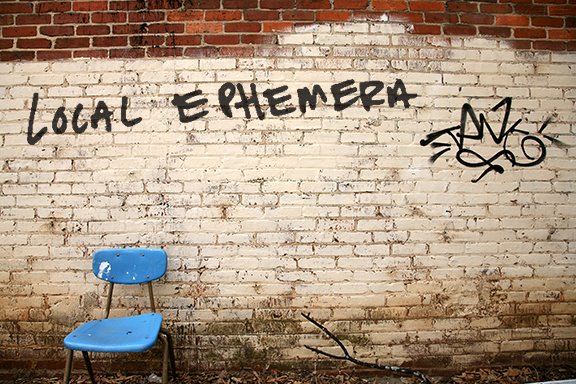 This drawing (in wood and metal) of the Eames house is what got me started. In his talk Ingram defined drawing as "mark making", and these words reminded me of Christopher McNulty's talk for his show "Days" at Saltworks Gallery last September (see previous post here). When introducing the artist, gallery owner Brian Holcombe commented on McNulty's work being about "simple mark making", which is interesting because McNulty considers a majority of his work sculpture.
This drawing (in wood and metal) of the Eames house is what got me started. In his talk Ingram defined drawing as "mark making", and these words reminded me of Christopher McNulty's talk for his show "Days" at Saltworks Gallery last September (see previous post here). When introducing the artist, gallery owner Brian Holcombe commented on McNulty's work being about "simple mark making", which is interesting because McNulty considers a majority of his work sculpture. "20, 534 Days" Christopher McNuly 2007 Graphite on Paper 18"x18"
"20, 534 Days" Christopher McNuly 2007 Graphite on Paper 18"x18"Including works like this graphite on paper piece. (all images snagged from McNulty's website)
 "Cubed I" 2002 Wood 12"x12"x12"
"Cubed I" 2002 Wood 12"x12"x12"If one took the argument that drawing was mark-making then it could be argued "Cubed I" is a drawing. It is, after all, simple lines on wood, reading much the same way as a drawing, except that the lines are shadows from cuts into the surface.
 "Ramifications I" 2004 Wood, Staples 7"x7"x21"
"Ramifications I" 2004 Wood, Staples 7"x7"x21"I'm a big fan of McNulty's work because it is so conceptually and process driven, yet aesthetically precise and beautiful. And it is much easier for me to see his paper pieces as sculpture than Ingram's wood and metal pieces as drawings - so I asked McNulty how he defines his work the way he does.
 "Consistency IV" 2006 Etching 15"x15"
"Consistency IV" 2006 Etching 15"x15"He gave this reasoning: "In much of my work it is the physicality and tactility of the materials that I use, along with the interaction between my body and the materials, that interests me. While it would not be quite true to say that I am not interested in mark making or drawing, I would suggest that the tactile is secondary to the visual in drawing."
 "Measure V" 2000 Wood 19"x12"x12"
"Measure V" 2000 Wood 19"x12"x12"This makes a lot of sense considering that with McNulty's works on paper it could be argued that the artwork is as much the idea or the action of McNulty methodically marking the paper as it is the actual marked paper, itself. His works could be seen as remnants of a performance, the evidence of an obsession, the result of a process without being the intention of the process.
And looking at art in McNutly's terms of "tactile" and "visual" it is easy to see that drawings communicate visually to the viewer in a way his work does not. But getting back to Ingram's "Eames House and Studio", this work does read "visually" like a drawing. The lines (including the outer lines of the object's shape) inform the viewer, much like looking at a 2-D architectural drawing on paper. The smooth and white-washed finish of the wood removes the tactile quality, leaving only lines to read, much like a drawing.
 "Impotent I" 1999 Wood, nails, paint 48"x3"x1"
"Impotent I" 1999 Wood, nails, paint 48"x3"x1"
 "Impotent I" 1999 Wood, nails, paint 48"x3"x1"
"Impotent I" 1999 Wood, nails, paint 48"x3"x1"All of this is really neither here nor there I guess, because as McNulty surmised, "like most taxonomic systems, the closer that you look, the more these categories tend to break down and blur."
True. But it's a good question to ask because I think that how the artist themselves define the medium of a specific artwork will greatly influence the intention, approach, and process in making the work, and in the end that is what "informs" the results. And so - if Ingram had intended "Eames House" to be a sculpture, I wonder how much differently it would have turned out?

No comments:
Post a Comment